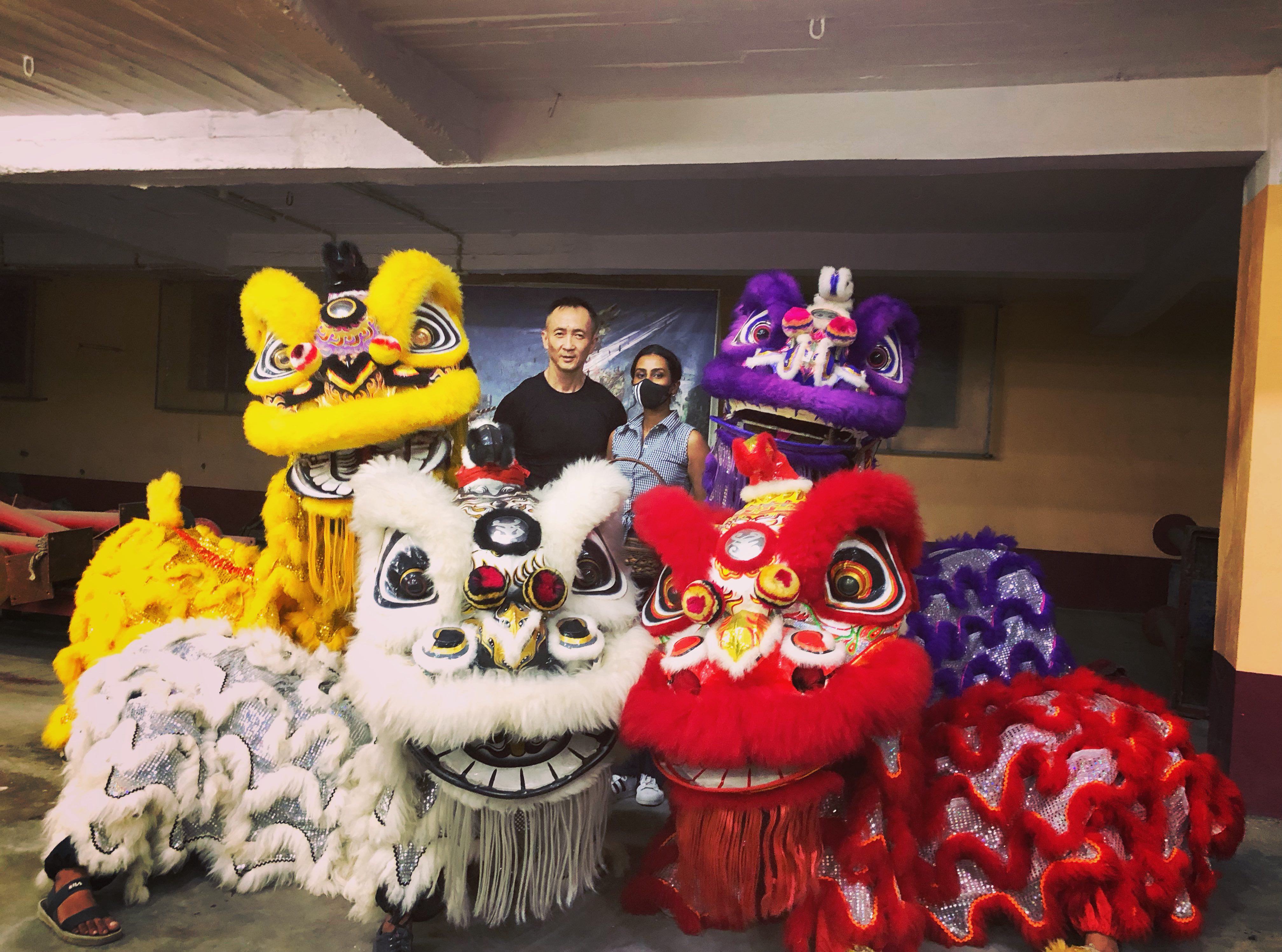As the Year of the Tiger was ushered in last week, groups of Lion dancers visited the homes of Indian-Chinese people, with “Choi” (typically fruits and green vegetables) symbolising “wealth” and collecting “hong bao” (red envelopes containing money), is a typical scene during the Chinese new year in Kolkata’s Chinatown.
While the concept of the Lion Dance fascinated me, what I was most surprised to learn about were the people behind the elaborate and colourful costumes of one such Lion Dance group in Tangra.
Mohammed Aslam: Salesman
Amit Kumar: Leather technician
Roshan Das: Service industry
Arjun Singh: Nurse
Afreen: Student
Krishna: Student
Afzil Ali: Dancer
Ajay Yadav: Student
Bishal: Bartender
Gaurav Yadav: Businessman
Ashok: Student
Manish Singh: Student
Thiam Lee: Student
You must be wondering why I am listing the names of people with their day jobs randomly.
Well, it’s because this group of Indians – with their regular lives and day jobs – is keeping alive a centuries-old Chinese martial art form in one of India’s only two surviving Chinatowns, both situated in Kolkata.
Aslam and Amit may not have much in common, but what brings them together for a couple of hours each day is their passion for martial arts and loyalty to their Sifu (Cantonese term for teacher), James Liao, the founder of India Hong De club.
Liao, a Chinese-origin Indian citizen, teaches the traditional Chinese “Lion Dance” to his diverse group of students, only one of whom is ethnically Chinese. Isn’t it surprising that a traditional Chinese Lion Dance group is primarily composed of students from Bengal and Bihar?
Liao recalls a time when his lion dance troop mostly consisted of students who were ethnic Chinese, as one would normally assume. However, over the years, with the mass emigration of the Indian-Chinese population to countries like Canada, preservation of the Chinese culture and traditions in Kolkata’s once bustling Chinatowns took a back seat. Liao lost most of his young ethnic Chinese students as many of them left the country to pursue higher education or with their families in search of better economic opportunities.
Also read: A Christmas Story From Calcutta
This gap was eventually filled by local boys and girls who showed interest and dedication in learning Wushu, which is a broad category of Chinese martial arts of which Lion Dance is a part.
Initially, many of Liao’s present students came to him with the intention of learning self-defense. Some, like Amit Kumar, have been training under him for as long as eight years now.
Liao teaches his students the importance of De (the eight core virtues of Chinese martial arts), namely –
Zhong – loyalty and honesty,
Zhen – righteousness and sense of duty,
Ee – endurance, perseverance and moral strength,
Yung – bravery and courage
Zhi – wisdom and intelligence
Chen – sincerity
He – harmony, friendship and peace and finally
Li – mannerism
“Out of all the above virtues what I emphasise on the most is loyalty. Loyalty towards the art and loyalty towards the teacher is the most important aspect of training to be a professional Lion Dancer,” says Liao.
There are multiple Lion Dance groups in Kolkata’s Chinatown but none that has accomplished the standard and fame enjoyed by “India Hong De”. Under Liao’s guidance and training, the group recently performed in the popular reality television series, India’s Got Talent and represented the Indian-Chinese community on a national platform.
“There was a point some years ago when I realised that the standard of Lion Dance in India amongst the Indian-Chinese community had fallen drastically. The principles on which the art form is based were forgotten and many local groups were doing it just for the hong bao (money),” says Liao.
This is when Liao made a trip to Malaysia and met Master Siow Ho Phiew, a pioneer in the field of Lion Dance. Liao learnt the best techniques from Siow. Once he was back home, Liao practiced for months in his family’s abandoned tannery in the outskirts of Chinatown before he resumed teaching again. This is where he conducts his classes to this day. Liao focuses on training the minds of his students by focusing on De, instead of just focusing on training their bodies. This is what sets them apart from the rest of the Lion Dance groups in Kolkata. “Some of my students travel all the way from the other side of the city, every day, after working full time jobs. That is the dedication and respect they show to the art and the teacher,” says Liao.
Liao has received criticism from several members of the community for his decision to train students who are not ethnic Chinese. They seem to view it as an insult to their Chinese roots, culture and traditions. “For me, it doesn’t matter what race my students are as long as they respect the art and Chinese culture,” says Liao. His long term goals include training his students to qualify and represent India in the World Lion Dance Championship some day.
Given the Indian-Chinese community’s history and experience of forced internment during the Indo-China war of 1962 and the backdrop of the active alienation felt by the community, in the face of growing border tensions between India and China, it is important to recognise the diaspora’s culture and traditions as our collective heritage. It is truly heartening and inspiring to see this spirit alive amongst the members of India Hong De.
Nilofar Absar, 28, is a lawyer by training and a storyteller by nature who takes a keen interest in the lives of people belonging to South Asian diasporic communities.

